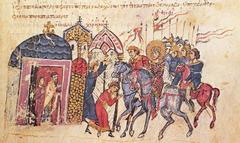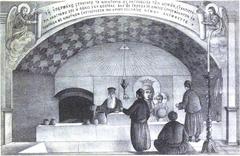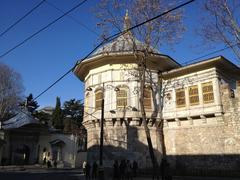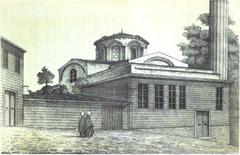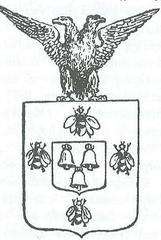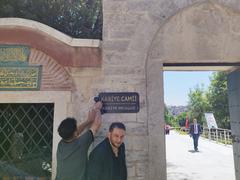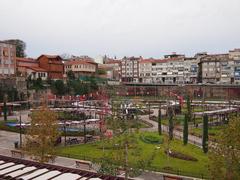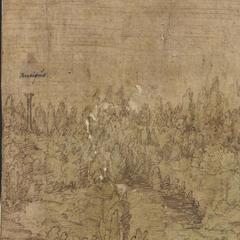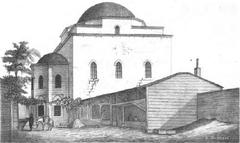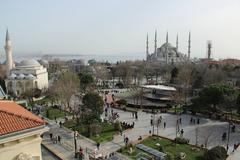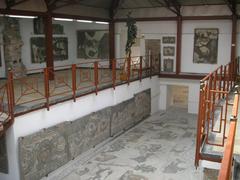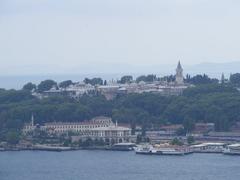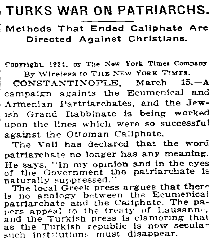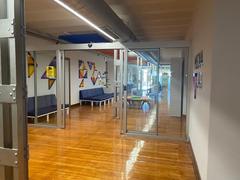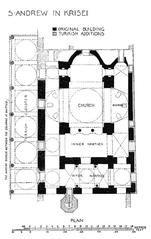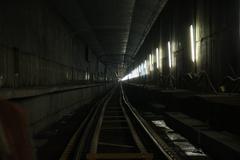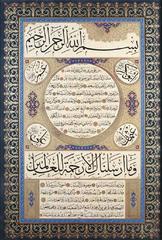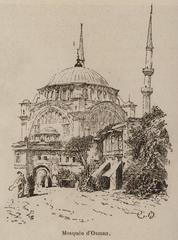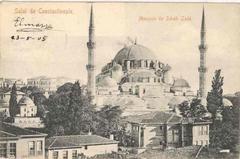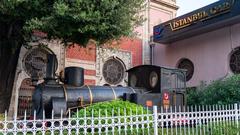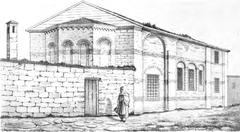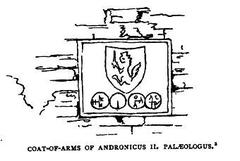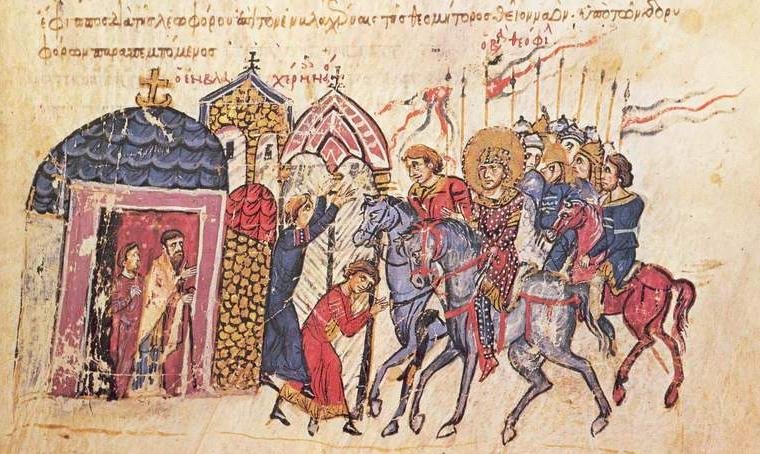
Visiting the Church of St Mary of Blachernae, Fatih, Turkey: Complete Guide
Date: 14/06/2025
Introduction: Historical and Cultural Significance
Set in Istanbul’s historic Fatih district near the Golden Horn, the Church of St. Mary of Blachernae is a landmark of Byzantine heritage and spiritual continuity. Founded in the mid-5th century CE by Empress Aelia Pulcheria, this sanctuary was closely tied to the Blachernae Palace and served as a powerful spiritual symbol for the Byzantine Empire. The church is famous for its sacred relics—most notably the Virgin Mary’s robe and girdle—and for the miracle-working Icon of the Virgin Blachernitissa, which played a key role during the 626 Avar siege of Constantinople. The sacred spring (Hagiasma), believed to hold healing powers, continues to attract Orthodox pilgrims to this day.
Although the original basilica was destroyed by fire and invasion, the 19th-century reconstruction preserves the sacred spring and reflects a blend of Byzantine revival and Ottoman architectural styles. Today, the church remains a site of pilgrimage, admired for its iconography, tranquil gardens overlooking the Golden Horn, and its role as a testament to Istanbul’s layered history.
This guide provides a thorough overview of the church’s history, architecture, visiting hours, ticketing, accessibility, and practical tips. Whether you are a history enthusiast, a pilgrim, or a traveler seeking to explore Istanbul’s Byzantine legacy, the Church of St. Mary of Blachernae offers a unique window into the city’s spiritual and cultural past.
For further reading, see: Istanbul Clues, Hellenic News, Greek Orthodox Patriarchate.
Contents
- Introduction
- Historical Overview
- Origins and Early Development
- Architectural Evolution
- Religious Significance and Relics
- Key Historical Events
- Architectural Highlights
- Original Features
- 19th-Century Reconstruction
- The Hagiasma (Sacred Spring)
- Visiting Information
- Visiting Hours
- Tickets and Admission
- Accessibility
- Getting There
- Visitor Experience
- Interior Highlights
- Atmosphere and Facilities
- Dress Code and Etiquette
- Guided Tours and Events
- Nearby Attractions
- Conservation and Restoration
- FAQ
- Conclusion
- Call to Action
- References
Discovering the Church of St. Mary of Blachernae
Historical Overview
Origins and Early Development
Constructed in the mid-5th century by Empress Augusta Pulcheria and completed by Emperor Leo I, the church was built around a pre-Christian sacred spring. It quickly became a principal Marian shrine, housing revered relics in the Hagia Soros chapel and serving as a center for imperial worship and protection.
Architectural Evolution
Initially a basilica, the church was lavishly expanded under Emperor Justinian I with marble and mosaics. By the 11th century, it was closely integrated with the Blachernae Palace, symbolizing the deep link between religious devotion and imperial authority.
Religious Significance and Relics
The church’s collection of relics—most famously the Virgin Mary’s robe, girdle, and the Icon of the Virgin Blachernitissa—cemented its status as Constantinople’s foremost Marian sanctuary. The Akathistos Hymn, a pillar of Orthodox ritual, was first sung here.
Key Historical Events
- 626 Avar Siege: The miracle-working icon was paraded around the city walls, and the subsequent deliverance was attributed to the Virgin Mary.
- Iconoclastic Controversy & Recovery: The icon disappeared during iconoclasm, reappearing in 1030.
- Destruction by Fire: Major fires in 1070 and 1434 destroyed much of the church and palace.
- Post-Conquest Era: After 1453, only the sacred spring continued as a place of pilgrimage. The current church was constructed in 1867, preserving the spring.
Architectural Highlights
Original Byzantine Features
The Byzantine basilica featured a three-part plan with narthex, nave, sanctuary, marble colonnades, and lavish mosaics. The sacred spring (Ayazma) was located in a crypt beneath the sanctuary.
19th-Century Reconstruction
The modern structure, dating to 1867, follows a straightforward basilical plan with stone and brick walls, arched windows, and a neoclassical portico. The interior includes marble columns, a wooden iconostasis, and modern Greek Orthodox iconography—preserving spiritual continuity.
The Hagiasma (Sacred Spring)
The Hagiasma remains central. Accessed via a staircase, the spring is housed in a marble-lined chamber, and visitors can collect its water—a tradition dating to the church’s foundation (Greek Reporter).
Visiting Information
Visiting Hours
- Standard Hours: 9:00 AM – 5:00 PM daily (Istanbul Tourist Pass).
- Note: Hours may vary on religious holidays; confirm in advance.
Tickets and Admission
- Admission: Free for individual visitors; donations are appreciated for upkeep.
- Guided Tours: Available through local operators or by arrangement.
Accessibility
- Wheelchair Access: Ramps are provided to the main entrance and courtyard.
- Surfaces: Some uneven areas near the spring and in the garden; wear comfortable shoes.
Getting There
- Public Transit: Tram stops at Ayvansaray or Edirnekapı; short walk to the church.
- Taxi/Rideshare: Widely available.
- Parking: Limited street parking.
Visitor Experience
Interior Highlights
- Iconostasis: Hand-carved wood with icons of the Virgin, Christ, and saints.
- Mosaics and Murals: Original Byzantine mosaics lost, but modern iconography adorns the walls.
- Atmosphere: Peaceful, with filtered natural light and a tranquil garden setting.
Dress Code & Etiquette
- Dress Modestly: Shoulders/knees covered; hats removed inside.
- Photography: Allowed unless during services. Always ask for permission.
- Silence: Respectful quiet is expected.
Guided Tours and Special Events
- Guided Tours: Byzantine history and religious heritage tours available via local operators and the Ecumenical Patriarchate.
- Liturgical Services: Major feasts, especially Marian celebrations, are observed with processions and special liturgies.
Nearby Attractions
- Blachernae Palace Ruins: Adjacent to the church.
- Walls of Constantinople: Short walk.
- Church of St. Savior in Chora: Not far, featuring world-renowned mosaics.
- Fener Greek Orthodox Patriarchate: Nearby religious landmark.
Conservation and Restoration
The church is a protected monument, with restoration and conservation supervised by the Ecumenical Patriarchate and Turkish Ministry of Culture and Tourism. Recent efforts focus on structural stability, iconostasis preservation, interior repainting, and monitoring the spring’s water quality (Ministry of Culture and Tourism).
Frequently Asked Questions (FAQ)
Q: What are the visiting hours?
A: Generally 9:00 AM to 5:00 PM daily, but may vary on holidays.
Q: Is there an entrance fee?
A: No; donations welcome.
Q: Is the church accessible for people with disabilities?
A: Yes, though some garden areas have uneven ground.
Q: Can I collect water from the holy spring?
A: Yes; bring a bottle.
Q: Are guided tours available?
A: Yes; arrange via local operators or the Ecumenical Patriarchate.
Q: Is photography allowed?
A: Outside of services, yes, but always be respectful.
Conclusion
The Church of St. Mary of Blachernae remains a vital link to Istanbul’s Byzantine and Orthodox Christian heritage. Visitors experience an atmosphere of peace and reverence, historic architecture, and the enduring tradition of the sacred spring. Its accessible location, free admission, and proximity to other major sites make it an essential stop for anyone exploring Istanbul’s religious and cultural history.
Recommendations
- Plan your visit for weekday mornings to avoid crowds.
- Dress modestly and respect local customs.
- Bring an empty bottle to collect holy water.
- Combine your visit with nearby sites for a richer experience.
- Use digital resources like the Audiala app for guided tours.
For more detailed information, see:
Istanbul Tourist Pass
Sacred Destinations
References
- The Best Istanbul Churches
- Hellenic News: In Byzantine Footsteps
- Istanbul Clues
- Istanbul Tourist Pass
- Greek Orthodox Patriarchate
- Sacred Destinations
- Ministry of Culture and Tourism
For more Istanbul travel insights and guided experiences, download the Audiala app or follow us on social media for tips on exploring the city’s historical gems.
